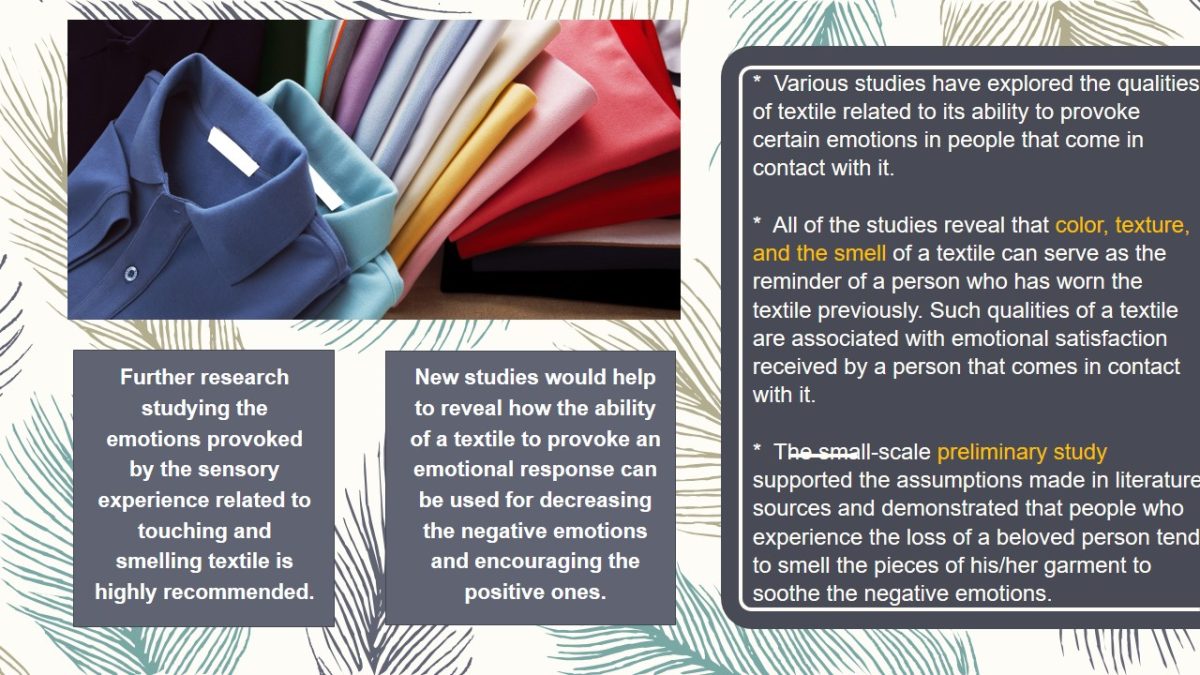- Along with having color and texture, textiles are capable of retaining various smells.
- People tend to touch or smell textiles belonging to certain person when they feel the need to make an emotional connection someone
- Investigating the capability of textiles to give emotional satisfaction to people can help to reveal the influence of the sensory qualities of textile on the emotions of people.
After losing a beloved person, people tend to locate the physical objects that could enhance the process of recalling specific events occurring in the past.
The smell of a textile plays a significant role in the mentioned process, as it serves as a powerful reminder of the person that used to wear it.
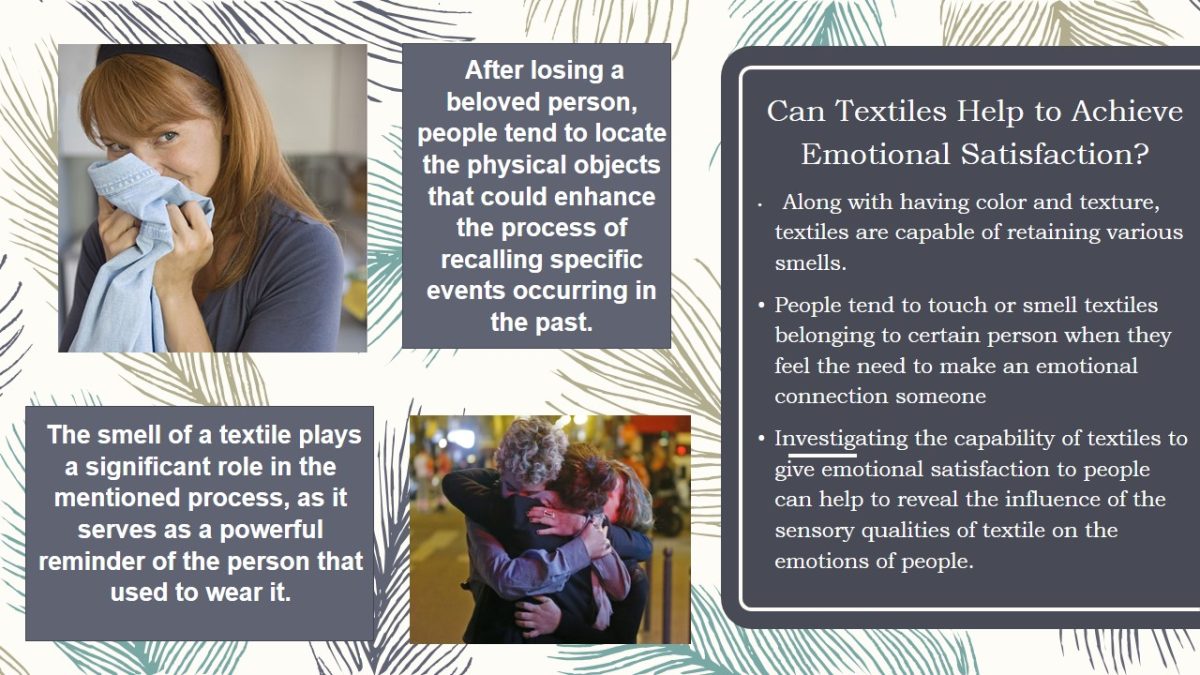
Literature Review
The Power of Color
- Han et al. (2013) have conducted a study revealing that the emotions can be affected by certain properties of textiles. The authors reveal that a coding system can be developed to code the textile products based on the emotions they provoke or represent. Indexing is considered to be dependent on such properties of the textile as the color and the images printed on it.
- Shin, Kim, and Kim (2010) reveal that the use of images creates more opportunities for an emotional connection. The researchers emphasize the power of visual properties of textiles to affect emotions of the people.
Recent studies support the notion that bright colors of textiles tend to affect the emotions of people positively while the dark and dull ones have the adverse effect.
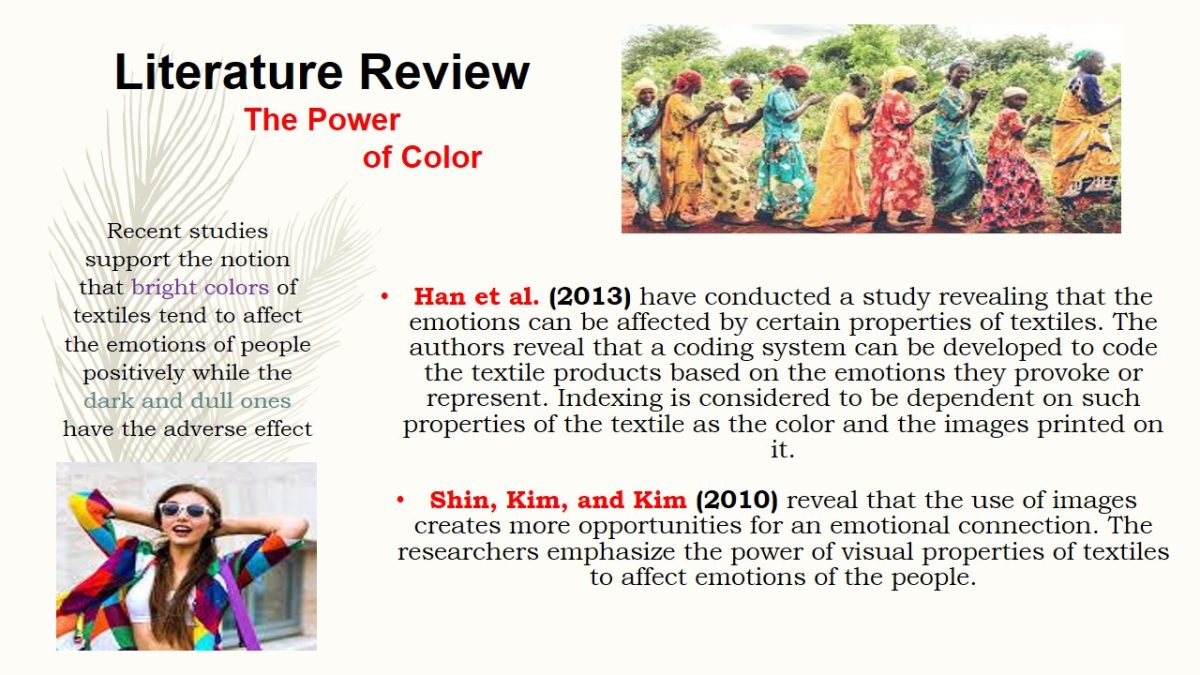
The Power of Touch
- The findings of the study conducted by Gross et al. (2011) reveal that:
- The need to touch textiles can be explained by tactile-emotion synaesthesia;
- Tactile experiences are usually associated with certain emotions.
- The findings of the study conducted by Singh et al. (2011) demonstrate that:
- The changes that occur in people on a cellular level demonstrate that the experience of touching textiles is reflected in the signals released by a human brain;
- Textiles can provoke the experience of affective touch.
The tactile perception of textile is just as important as the visual one. Though visual experiences related to color play a significant role in promoting the emotional satisfaction, the necessity to come into a physical contact with a textile is also obvious.
- The results of the study conducted by Jeon (2011) show that:
- The phenomenon of affective touch is based on such properties of textiles as their texture and shape.
- The emotional satisfaction received by a person touching a textile is promoted by its properties, such as roughness/warmth, the vibration that it releases, etc.
- The kinesthetic and olfactory experiences serve for creating a link to the previous contacts with the person wearing the item and the corresponding emotions.
- The combination of such properties of a textile as the texture and the comfort, which textiles are typically associated with, create the special environment promoting the likelihood of experiencing positive emotions.
- The findings of the study conducted by Ahmed and Hakkarainen. (2013) reveal that:
- Tactile experiences activate other senses and trigger an immediate connection to previous situations, in which similar physical sensations were directly related to certain emotions.
- By placing a person in the environment provoking the same physical sensations that were experienced before, textiles may cause the positive emotions and trigger happy memories about the person that used to wear a certain piece of garment.
Breedon (2012) suggests that smart textiles, which can change their color according to the emotions experienced by their owners can be created. Such textiles would include wearable technologies and reflect the emotional state of the persons wearing them and demonstrate this information to other people.
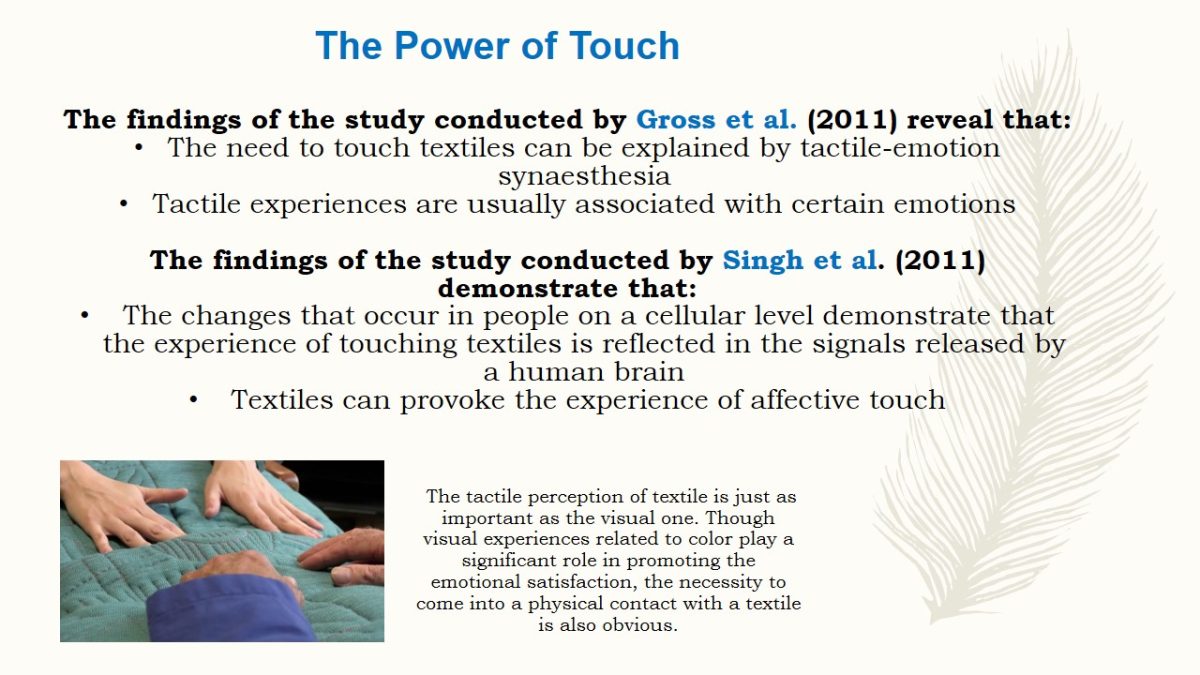
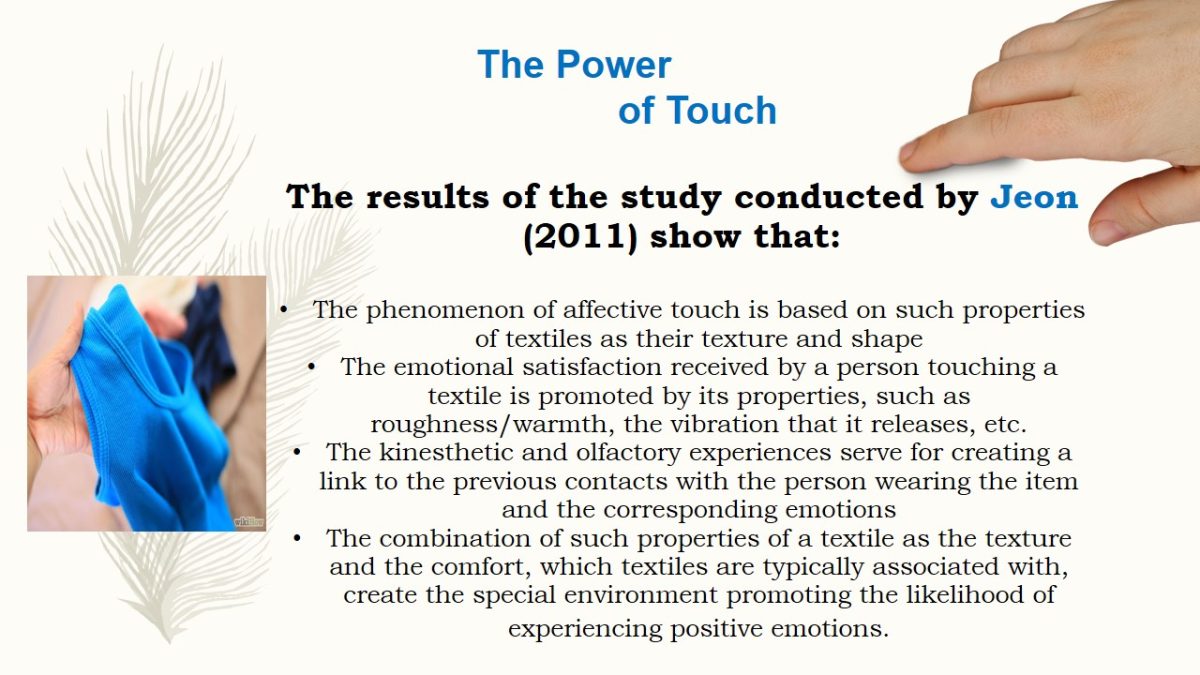
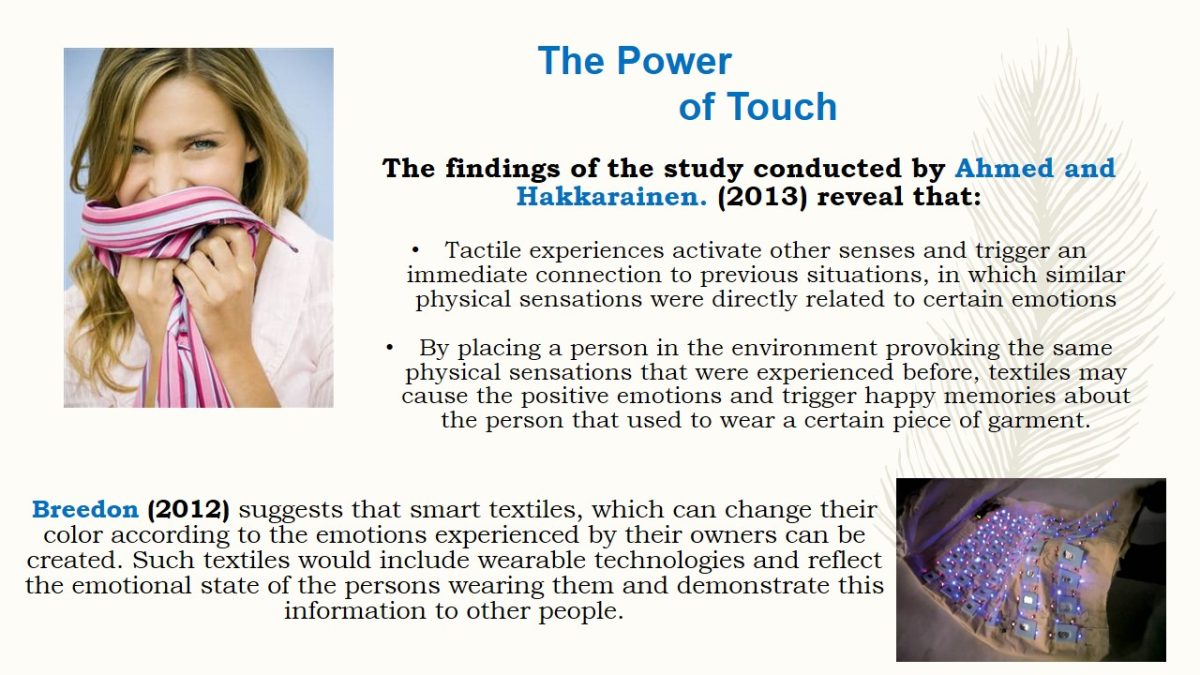
The Power of Smell
Textiles can retain volatile organic compounds (VOCs), which contribute to the creation of a specific smell reminding one of a certain person.
- Salar (2012) reveals that the VOCs retained in textiles due to their structure make the textile products capable of keeping the smells for an impressive amount of time.
- Namdhari et al. (2012) also claim that VOCs become incorporated into the fabric and remain in its very structure even after the textile items have been washed. Therefore, these components help to retain the smell of the person that used to wear the textile item.
- People create associations with textiles on a very personal level because of the emotional link to the memories of a specific person provided by the smell of fabric.
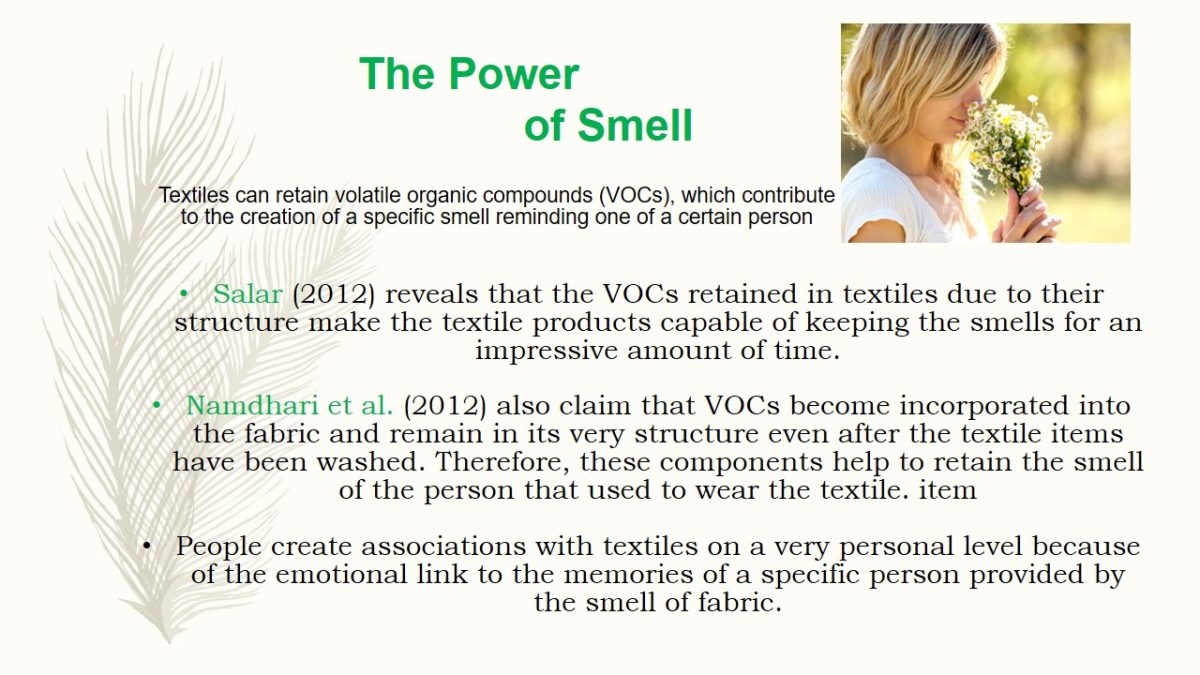
Small-Scale Preliminary Study
A small-scale preliminary was conducted to explore the relation between the smell of textiles and the emotional responses.
- Twelve participants were asked to smell a piece of textile related to a person they had lost and describe their emotions.
- The results of the experiment show that the smell of beloved person contained in textiles produced a positive emotional response.
- The mentioned emotional response helped the participants to cope with such strong negative emotions as fear, anguish, anxiety, panic, misery, etc.
The findings of the study support the idea that people seek comfort in touching textile products due to the smell that can spark the memories of the person who used to wear them.
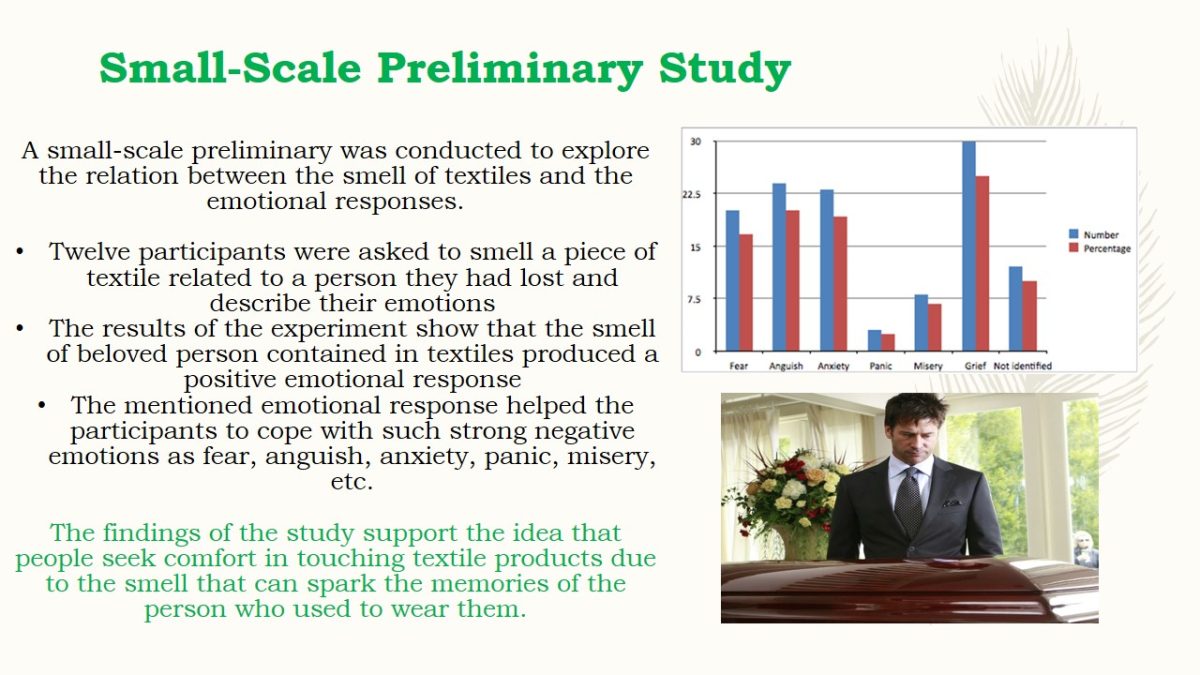
Various studies have explored the qualities of textile related to its ability to provoke certain emotions in people that come in contact with it.
All of the studies reveal that color, texture, and the smell of a textile can serve as the reminder of a person who has worn the textile previously. Such qualities of a textile are associated with emotional satisfaction received by a person that comes in contact with it.
The small-scale preliminary study supported the assumptions made in literature sources and demonstrated that people who experience the loss of a beloved person tend to smell the pieces of his/her garment to soothe the negative emotions.
Further research studying the emotions provoked by the sensory experience related to touching and smelling textile is highly recommended.
New studies would help to reveal how the ability of a textile to provoke an emotional response can be used for decreasing the negative emotions and encouraging the positive ones.
